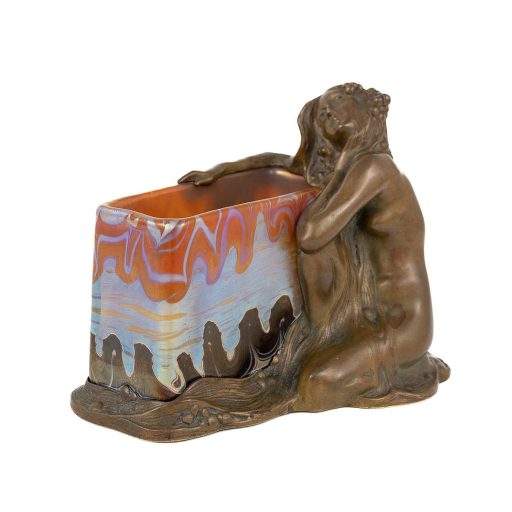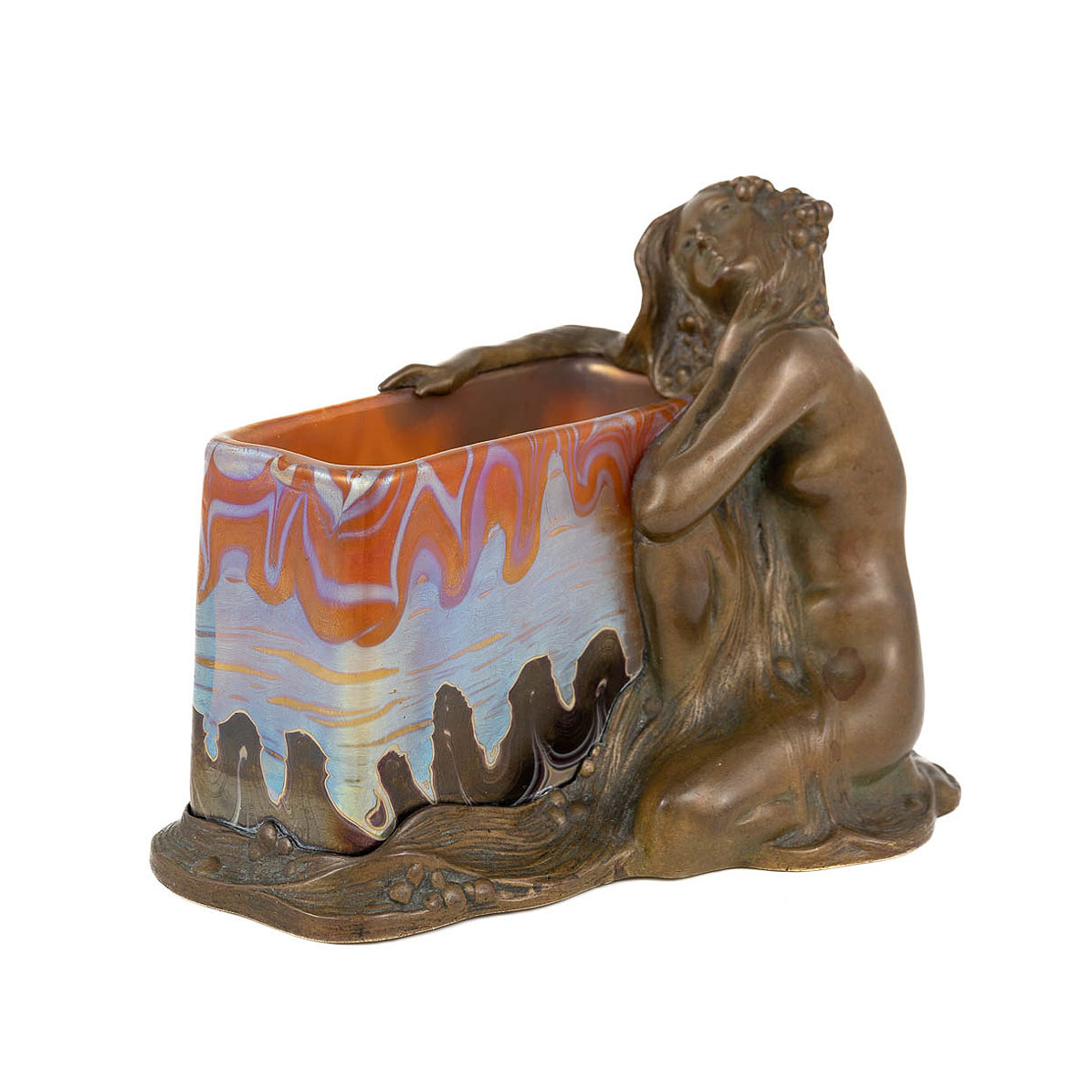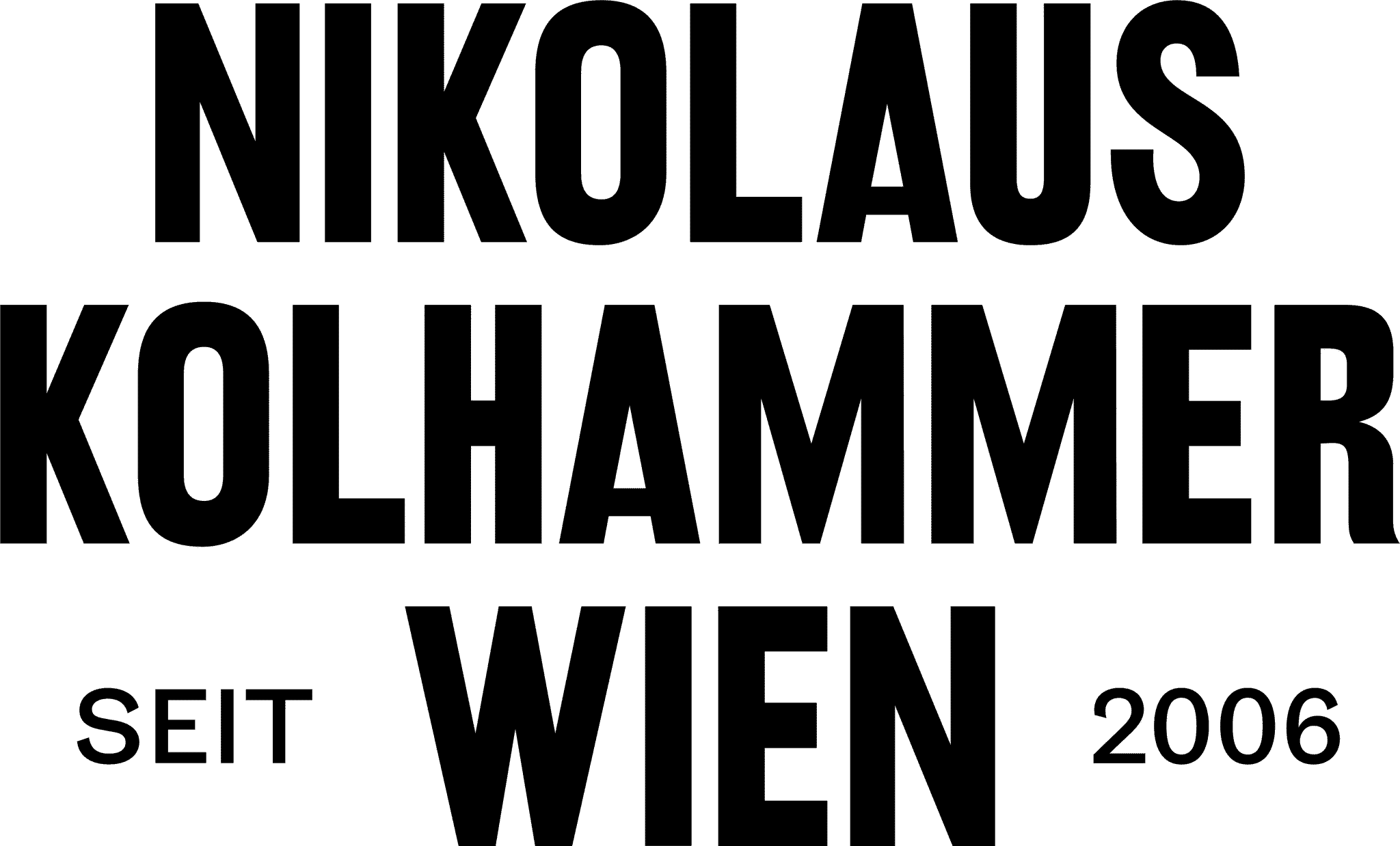Loetz vase with water nymph PG 358 ca. 1901
Loetz vase with water nymph, vase decor design Franz Hofstötter PG 358, execution Johann Loetz Witwe for Bakalowits, ca. 1901, glass and bronze
bib.: A. Adlerova, E. Ploil, H. Ricke, T. Vlcek (ed.), Loetz – Böhmisches Glas 1880-1940, vol. II, paper pattern catalogue, Prestel, Munich 1989, paper pattern 85/3857, p. 286; volume 2 Working Drawings of E. Bakalowits Sohne at MAK, Vienna, draft no. BI 32066-2
Out of stock
Description
At the turn to the 20th century, Symbolism could not only be found in European Fine art, but also in arts and crafts. A beautiful example is this square Loetz-vase with figural symbolistic mounting.
The vessel’s shape was created for Viennese glass editor E. Bakalowits Sohne, who commissioned designs with renowned architects and other artists around 1900. The décor PG 358 was designed by Franz Hofstötter for Paris World Fair 1900. On top the sheet bearing the pattern cut for the vase, the name Friedrich Böhm und Sohn is featured. Upon further research, it turns out that Friedrich Böhm was a teacher at Kunstgewerbeschule – Vienna school of arts and crafts. Therefore, it can be assumed that this object has been designed at Kunstgewerbeschule. The actual designer, however, remains unknown.
The kneeling female nude is reminiscent of a water nymph crouching at a fountain. Longingly, she nestles against the edge of the vessel, her flowing hair literally washing around the glass. The hair is rhythmically undulating and decorated with spherical, secessionist elements.
The motif of the figure could be borrowed from Gustav Klimt’s ink drawing “Fischblut” or from other illustrations in “Ver Sacrum”, the magazine of Vienna Secession from 1898. Stylistically, the work fits very well in the period around 1900/1901, in which artists such as Gustav Gurschner, repeatedly depicted women as nymph-like creatures.
Artist
Franz Hofstötter (Munich 1871 – 1958 Bachern) was a German painter, sculptor, architect, glass painter and craftsman. After attending the Kunstgewerbeschule Munich, he studied at the Munich Academy from 1890-93, among others with Gabriel von Hackl and Wilhelm von Ruemann. From 1894 until World War I, Hofstötter made a name for himself with designs for stained glass windows and entire church furnishings. His artistic value was probably secured by his designs for the glass manufacture Johann Loetz-Witwe (Klostermühle). Max Ritter von Spaun, the owner of the glassworks, had commissioned the young artist to design the art glass collection for the 1900 World Exhibition in Paris. Hofstötter's completely new vase shapes together with contemporary modern vegetal or naturalistic reduced decors contributed significantly to the resounding success of the glass manufacturer Loetz at this important international exhibition. Franz Hofstötter continued to create glass designs for Loetz until around 1911. After his military service in World War I, a personal crisis led to the discontinuation of his artistic work. Hofstötter's name is known to all Loetz collectors and his decorative glasses created for the 1900 World Exhibition can be found in collections of all important Jugendstil museums worldwide.
Inquiry
By submitting the inquiry form, you agree to the use of your data for this inquiry. Privacy Policy



















